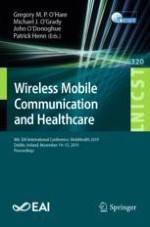Abstract
Healthcare delivery in rural America poses additional challenges than its urban counterpart. Rural locations more commonly face shortage of physicians, a lack of high-paying jobs with adequate insurance benefits, transportation, health literacy, a stigma with health conditions due to lack of anonymity and difficulties accessing specialty care. Rural communities see higher rates of suicide, heart diseases, respiratory disease, stroke, social isolation, and public health crisis such as the opioid epidemic. More than 46 million Americans, or 15% of the population, live in rural areas within the United States.
Communities play an important role in the health of their residents, as social and economic factors, physical environment, and healthy behaviors make up 80% of an individual’s overall health, while clinical care accounts for only 20%. Chronic disease doesn’t occur in isolation. Conditions such as diabetes, asthma, heart disease, and obesity are all tied very closely to the environments, culture, and behaviors that surround individuals. Therefore, a significant amount of human health is determined beyond clinical care. For many individuals who are at an elevated risk of developing chronic disease, episodic care that begins and ends inside a hospital or clinic is not adequate to accurately treat the patient.
We propose a holistic mHealth community model for residents to overcome significant barriers of care in rural America by providing an application capable of integrating multiple health and safety data sources through a mobile digital personal health library application. Users are able to securely share their health data with others (e.g. primary care physician, caregiver). Artificial Intelligence (AI) algorithms can strategically connect residents to community resources and provide customized health education aimed at increasing the health literacy, empowerment, and self-management of the user. Communities can use de-identified population health data from this model to improve decision-making and allocation of community resources.
